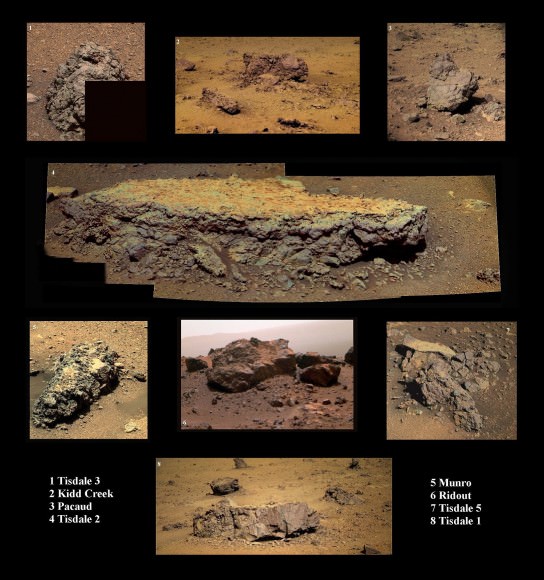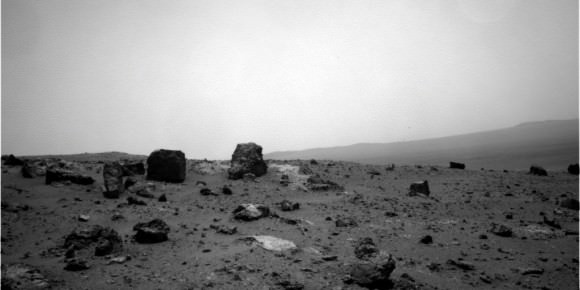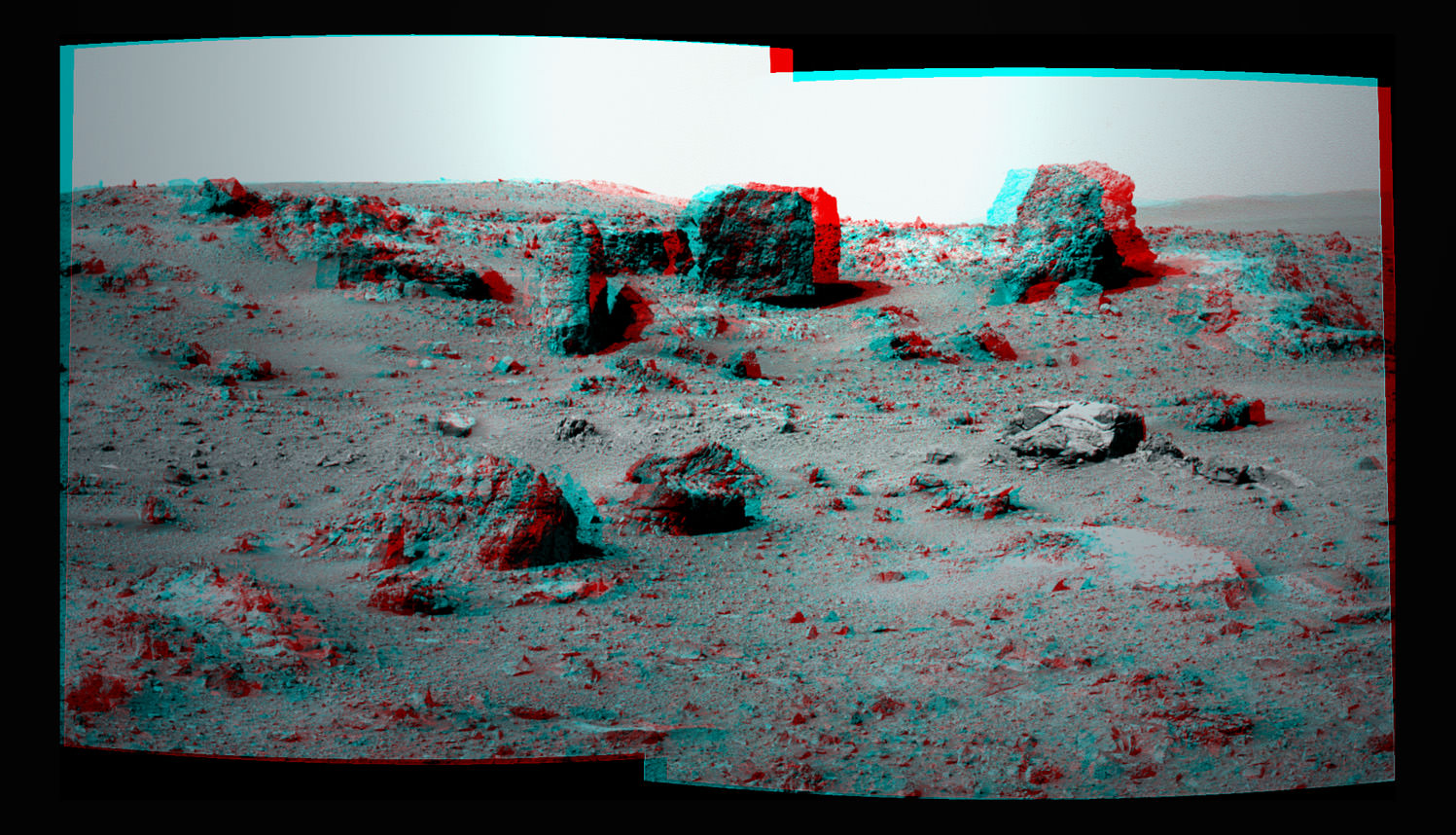[/caption]
Want to experience a “you-are-there” moment with the Opportunity rover on Mars? Grab a set of 3-D glasses (red/blue) and take a gander at one of the latest views from Oppy as she starts her explorations around the rim of Endeavour Crater. This stunning 3-D version of an image taken by the rover was created by our pal Stu Atkinson. This “rock garden,” as the folk from Unmanned Spaceflight are calling it, provides a view unlike anything either Mars rover has investigated yet on Mars. The region is called “Spirit Point” in honor of the now-silent rover that sits on the other side of Mars. This is actually an ejecta field of rocks thrown about after the impact that created this huge crater where the rover is now traversing, and is an exciting region for the MER scientists to explore. As Stu so poetically says in his Road to Endeavour blog, it’s also exciting because Opportunity “was sent to Mars to look at rocks, to drive between rocks, to trundle over powdery, cinnamon-hued dust that used to be rocks to get to younger, more solid rocks.”
Oppy’s found a veritable treasure trove of interesting rocks to explore, and Stu has also put together a collection of some of the most interesting in the rover’s current field of view:

The latest mission update for Opportunity on the Mars Rover website says the rover has now reached the rock named Tinsdale 2, started a multi-sol, multi-target in-situ (contact) investigation with a Microscopic Imager (MI) mosaic of a set of surface targets collectively named “Timmins,” followed by a placement of the Alpha Particle X-ray Spectrometer (APXS) for an overnight integration. So, she is putting all her resources to work to find out more about this interesting rock.
Here’s a non-3-D, raw image of the region from Opportunity:

Thanks to Stu for sharing his great images, and you can read more about this interesting spot on Mars in Stu’s article, “In Praise of Rock“


They rock like Stu’s poetry. :d
Is that water around Munro Rock # 5 sure looks like water.
False color images are hard to interpret. It is a flat surface, but it is likely dust which is common on Mars and unlikely (brine) water which is uncommon. (Maybe Phoenix saw drops – in a place full of ices.)
Maybe sublimated CO2?
Astounding, we can go here see it’s beauty, analyse it, understand it a bit better. Why the fuck don’t we as a species, try an direct some of our time and energy; to understanding and getting on with one another.